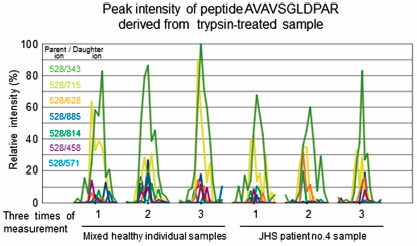- J-STAGE home
- /
- Biological and Pharmaceutical ...
- /
- Volume 42 (2019) Issue 9
- /
- Article overview
-
Kazuo Yamada
Department of Biosignaling and Radioisotope Experiment, Interdiscipnary Center for Science Research, Organization for Research and Academic Information, Shimane University Department of Legal Medicine, Faculty of Medicine, Shimane University
-
Atsushi Watanabe
Division of Clinical Genetics, Nippon Medical School Hospital Division of Clinical Genetics, Kanazawa University Hospital
-
Haruo Takeshita
Department of Legal Medicine, Faculty of Medicine, Shimane University
-
Atsushi Fujita
Department of Human Genetics, Yokohama City University Graduate School of Medicine
-
Noriko Miyake
Department of Human Genetics, Yokohama City University Graduate School of Medicine
-
Naomichi Matsumoto
Department of Human Genetics, Yokohama City University Graduate School of Medicine
-
Ken-ichi Matsumoto
Corresponding author
Department of Biosignaling and Radioisotope Experiment, Interdiscipnary Center for Science Research, Organization for Research and Academic Information, Shimane University
2019 Volume 42 Issue 9 Pages 1596-1599
- Published: September 01, 2019 Received: February 19, 2019 Released on J-STAGE: September 01, 2019 Accepted: June 10, 2019 Advance online publication: - Revised: -
(compatible with EndNote, Reference Manager, ProCite, RefWorks)
(compatible with BibDesk, LaTeX)


